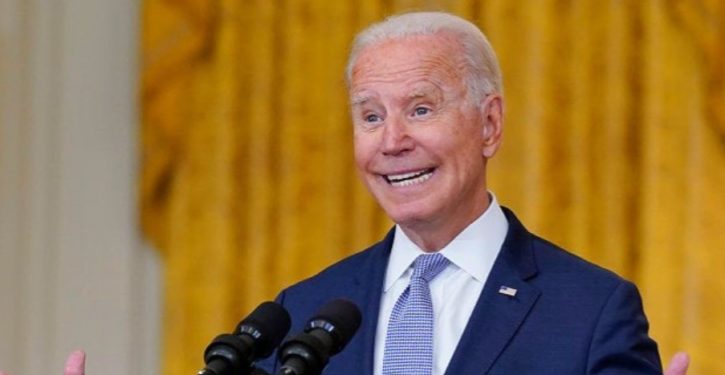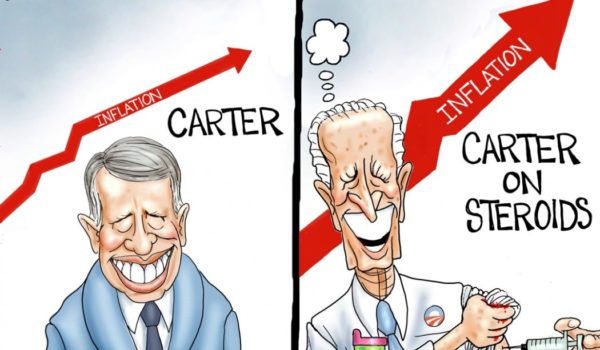
“In another blow to the US economy, prices at the pump soared to fresh record highs. The national average price for regular gasoline climbed more than four cents on Tuesday to $4.37 a gallon…That takes out the prior record of $4.33 set on March 11,” reports CNN. In California, the average price for gas is $5.84. It’s $4.69 in Illinois, and $4.57 in New York State. As CNN notes,
The gas spike — prices are up 17 cents in the past week alone — will only add to inflationary pressures that have raised recession fears, rocked financial markets and soured Americans’ views on the economy…Some analysts fear even higher prices are coming. Andy Lipow, president of Lipow Oil Associates, told CNN on Sunday he expects retail prices will jump to $4.50 a gallon in the next week to 10 days…The national average dipped to as low as $4.07 a gallon in April after the record-setting release of oil from emergency reserves and as oil prices cooled off. But as industry analysts predicted at the time, that relief proved to be short-lived and minor.
Biden’s release of oil from the Strategic Petroleum Reserve didn’t just fail to reduce gas prices much. It also was illegal. Biden’s action violated the 1975 Energy Policy and Conservation Act, the law that established the Strategic Petroleum Reserve, according to Mark Robeck, the former deputy general counsel of the Department of Energy. The law prohibits the release of emergency SPR stocks unless there is a severe domestic supply shortage, an act of sabotage or natural disaster, he says. “Congress imposed a predicate circumstance of a ‘severe energy supply disruption’ for the president and secretary of energy to authorize the sale of crude oil from the SPR, and such a disruption simply does not exist right now,” Robeck explained in the Washington Examiner. “The unlawful release of oil from the SPR threatens national security by depleting the SPR absent a true supply disruption.”
On March 31, Biden ordered the Strategic Petroleum Reserve to release a million barrels of oil per day for six months, the largest release in U.S. history. Biden had earlier ordered a 30-million-barrel release on March 1 and a 50-million-barrel release in November.
Robeck says these releases potentially endanger national security by depleting the reserve during a non-emergency. That could leave America unable to cope with a true disaster that seriously crimps oil production. For example, “If Iran decides the time is right to pursue a show of force in the Middle East and attack Saudi Arabia, we could face an actual worldwide disruption of supply with a depleted reserve of crude oil in the SPR,” he explained. “Similarly, if a Category 5 hurricane hits the Gulf of Mexico and shuts down oil production for weeks, as with Hurricane Katrina, the SPR may not be able to respond to the actual emergency.”
The Strategic Petroleum Reserve, which was designed to store 714 million barrels of oil for emergencies, currently contains less than 600 million barrels, its lowest level in 20 years. Biden’s current release of 180 million barrels will take the reserve to its lowest level ever, without even having much impact on oil prices.
Thanks to Democrats’ past decision to keep President Trump from expanding the reserve back when oil was dirt cheap, the amount of oil in the reserve is just too tiny to have much effect on gas prices. America could have refilled and expanded the Strategic Petroleum Reserve in 2020 when oil was dirt cheap, and then sold the oil later at a time of high prices, for a hefty profit.
In March 2020, President Trump proposed adding oil to the strategic petroleum reserve when oil cost only $14 per barrel, but Democrats blocked him from doing that. Now, oil is more expensive, well over $100 per barrel. Not buying oil back in 2020 cost the U.S. government the opportunity to make billions of dollars reselling the oil today for at a profit of around $90 per barrel. If Congress had authorized the purchase of several hundred million barrels of oil for $14 back in 2020, the federal government could sell that oil today for over $100 per barrel, making tens of billions of dollars in profits (if Congressional authorized such a non-emergency sale, as it probably would).
But the oil reserve is nowhere near full, and no effort was made to expand its capacity when oil was cheap. Now, there is too little oil in the reserve to have much effect on oil prices, and the price of a barrel of oil could be even higher — as high as $120 — in a few months.



